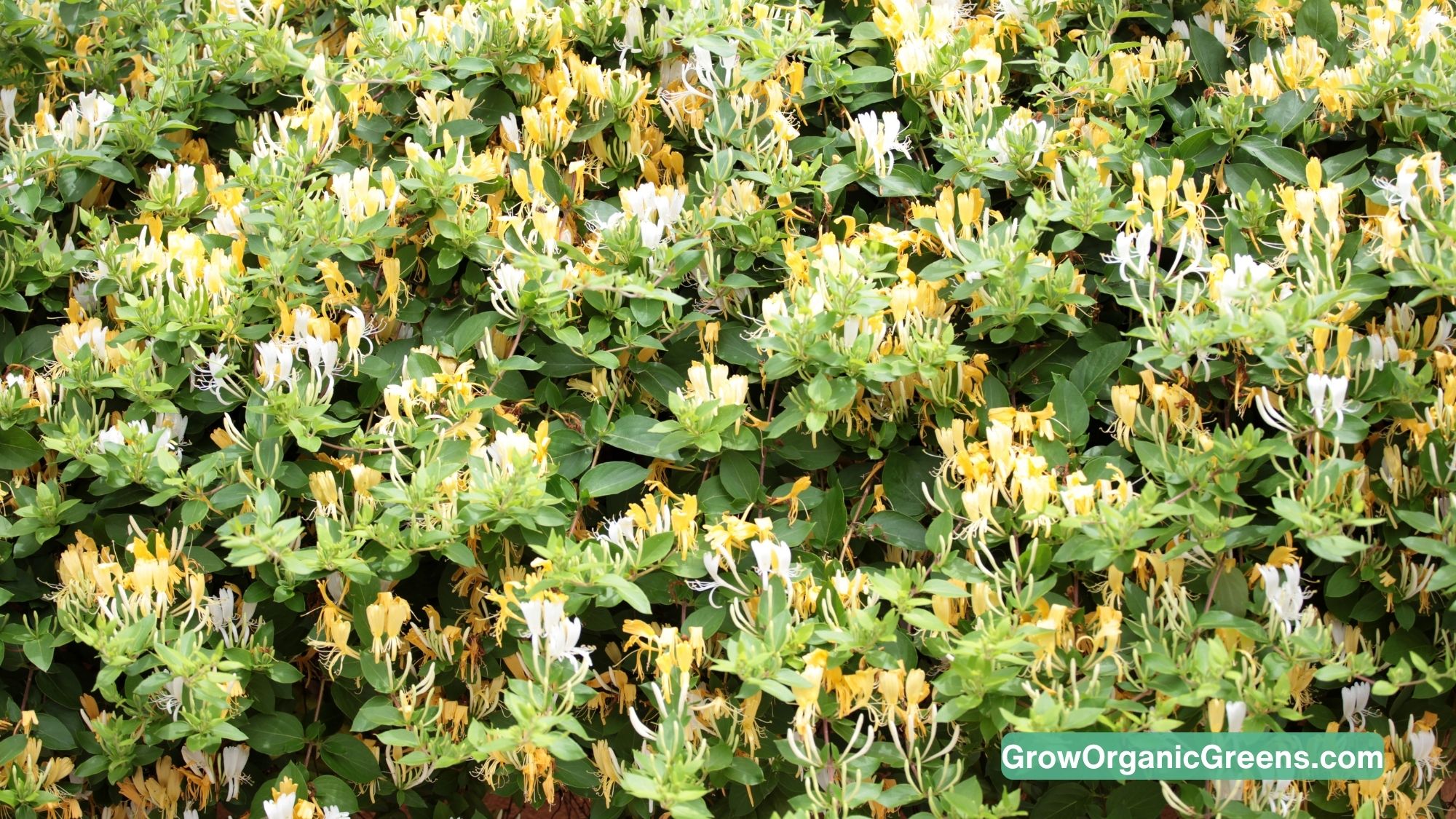Sweet Tea Honeysuckle is a delightful perennial vine known for its attractive flowers and sweet fragrance. This article will provide you with all the essential information on how to grow and care for this beautiful plant, ensuring it thrives and adds charm to your garden. For those interested in exploring more climbing plants, consider our guide on how to grow and care for honeysuckle.
How Does It Look?
Sweet Tea Honeysuckle features creamy white, tubular flowers that turn yellow as they age, adding a lovely gradient of color to your garden. The buds start white and become creamy as they open. The leaves are green, oval-shaped, and grow in pairs along the stem, creating a lush backdrop for the charming flowers. If you’re interested in incorporating other visually striking vines, check out popular varieties of honeysuckle.
Native
Sweet Tea Honeysuckle is a cultivated variety and is not native to any specific region, but it can be a great addition to gardens that already feature plants from different origins. For ideas on how to integrate it into your existing garden setup, consider reading about landscape horticulture design ideas.
Hardiness Zones
4-9 (USDA). Search your hardiness zone.
Annual/Biennial/Perennial
Sweet Tea Honeysuckle is a perennial vine, providing long-term beauty and fragrance to your outdoor space. For other perennial options, see our guide on 36 low maintenance potted plants.
Requirements at the Time of Plantation
This honeysuckle prefers well-drained, fertile soil and can be planted in locations with full sun to partial shade. The best times for planting are in spring or fall to ensure the vine establishes well before extreme weather conditions. Learn more about how to prepare your soil with our soil testing for garden guide.
Blooming Season
Sweet Tea Honeysuckle blooms from late spring to early summer, providing an early splash of color and fragrance in your garden. If you’re planning a garden with staggered blooms, you might want to explore companion planting strategies.
How to Take Care
For optimal growth, plant Sweet Tea Honeysuckle in an area that receives full sun to partial shade. Apply a balanced fertilizer in early spring to promote healthy growth. Regular watering is essential, especially during dry periods, to keep the soil consistently moist but not waterlogged. For irrigation tips, check out the best watering system for raised bed gardens and how often should you water your garden. Using organic mulch helps retain soil moisture and suppress weeds.
Companion Planting
Companion planting with other climbing plants and shrubs can create a visually appealing garden and promote a healthy growing environment. The sweet fragrance and attractive flowers make Sweet Tea Honeysuckle an excellent choice for decorative purposes.
Uses
- Aesthetic: Sweet Tea Honeysuckle is primarily used for its decorative flowers and sweet fragrance, making it a favorite for gardens and landscapes.
- Medicinal: This variety is not commonly used for medicinal purposes.
- Culinary: Sweet Tea Honeysuckle is not used for culinary purposes.
How to Propagate
Propagation can be achieved through cuttings. Take cuttings from healthy, established plants and root them in well-draining soil. For detailed instructions on plant care, refer to our pruning, deadheading, and pinching essential plant care guide.
Problems and Organic Solutions
Common pests include aphids and spider mites, which can be controlled using neem oil or insecticidal soap. Powdery mildew is another potential issue, manageable by ensuring good air circulation and applying organic fungicides if necessary.
Special Facts
Sweet Tea Honeysuckle is celebrated for its delightful fragrance and rapid growth, making it an excellent choice for garden enthusiasts looking to add a touch of beauty and scent to their outdoor space. Additionally, it can attract beneficial pollinators; learn how to attract more with our tips to attract pollinators to your garden.
Conclusion
Incorporating Sweet Tea Honeysuckle into your garden can provide both visual and aromatic pleasure. With its beautiful flowers, relatively easy care requirements, and sweet fragrance, this perennial vine is a wonderful choice for gardeners looking to enhance their outdoor spaces. Ready to enjoy the charming blooms and sweet scents of Sweet Tea Honeysuckle? Start planting today and watch your garden come to life.
Quick Facts Table
| Aspect | Details |
| Appearance | Creamy white to yellow tubular flowers; green, oval leaves |
| Native | Cultivated variety, not native to any specific region |
| Hardiness Zones | 4-9 (USDA) |
| Lifespan | Perennial |
| Plantation Requirements | Well-drained, fertile soil; full sun to partial shade; plant in spring/fall |
| Blooming Season | Late spring to early summer |
| Care Needs | Full sun to partial shade; balanced fertilizer in early spring; regular watering; organic mulch; companion planting with climbing plants and shrubs |
| Uses | Decorative value; sweet fragrance |
| Propagation | Through cuttings |
| Problems & Solutions | Aphids and spider mites (neem oil, insecticidal soap); powdery mildew (good air circulation, organic fungicides) |
| Special Facts | Delightful fragrance; rapid growth |

Misty S is the founder and lead writer at GrowOrganicGreens.com, a comprehensive gardening resource dedicated to helping people cultivate beautiful and sustainable gardens. She has a Master’s degree in Economics and specialized studies in agricultural economics, horticulture, and soil science. Drawing from her extensive knowledge and experience, Misty shares practical gardening tips on soil preparation, organic manure composting, fertilizers, plant care, and indoor gardening, making her advice accessible and helpful to gardeners of all levels.
Despite having an high-demanding 9-5 job, Misty dedicates her personal time to researching and exploring various gardening topics. Her keen interest in gardening has grown into a passion, driving her to help new gardeners and anyone interested in starting their gardening journey.
Follow Misty’s work and the latest gardening insights and updates on Pinterest. You can reach out to Misty at mistysblogging@gmail.com.

